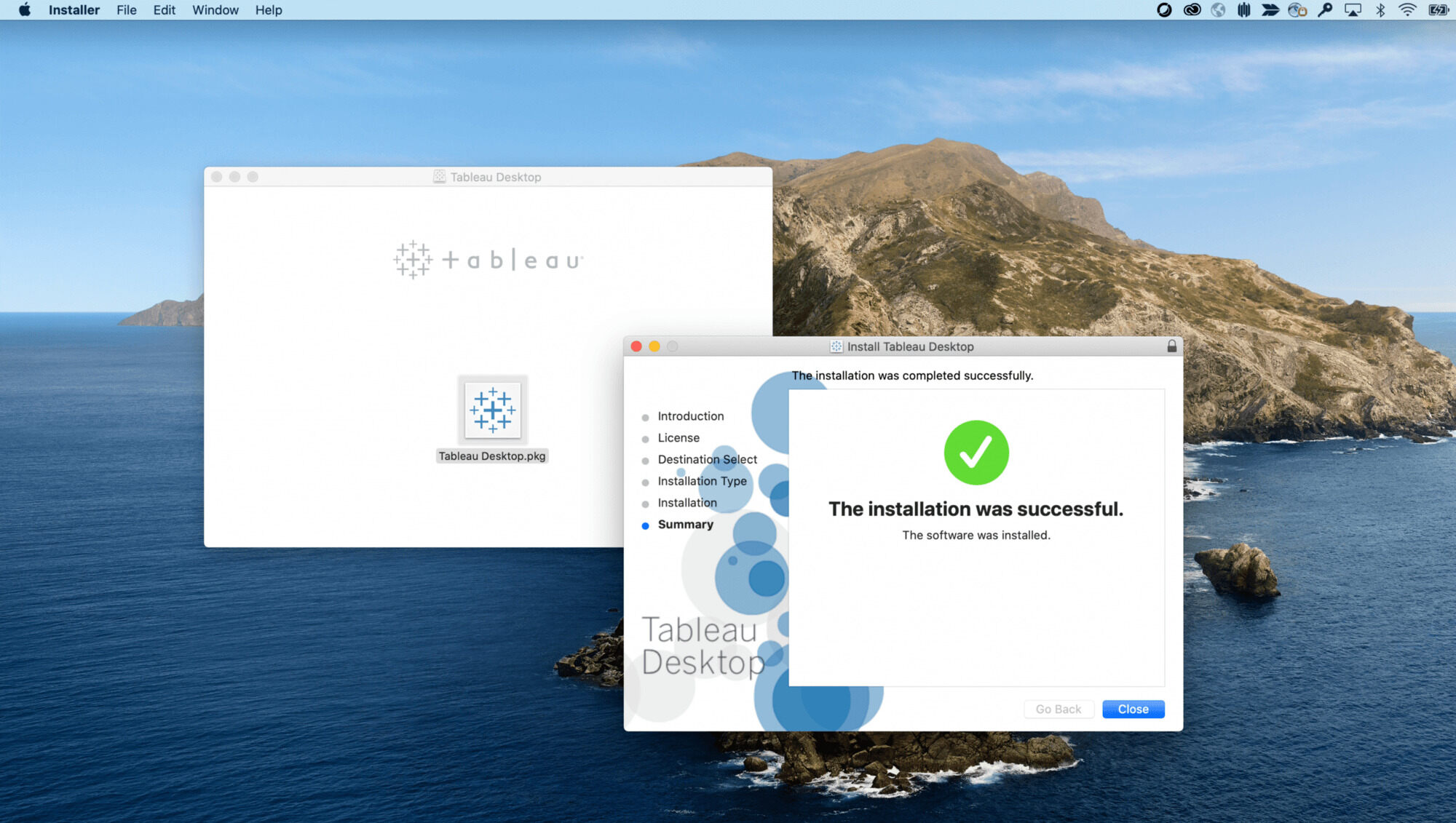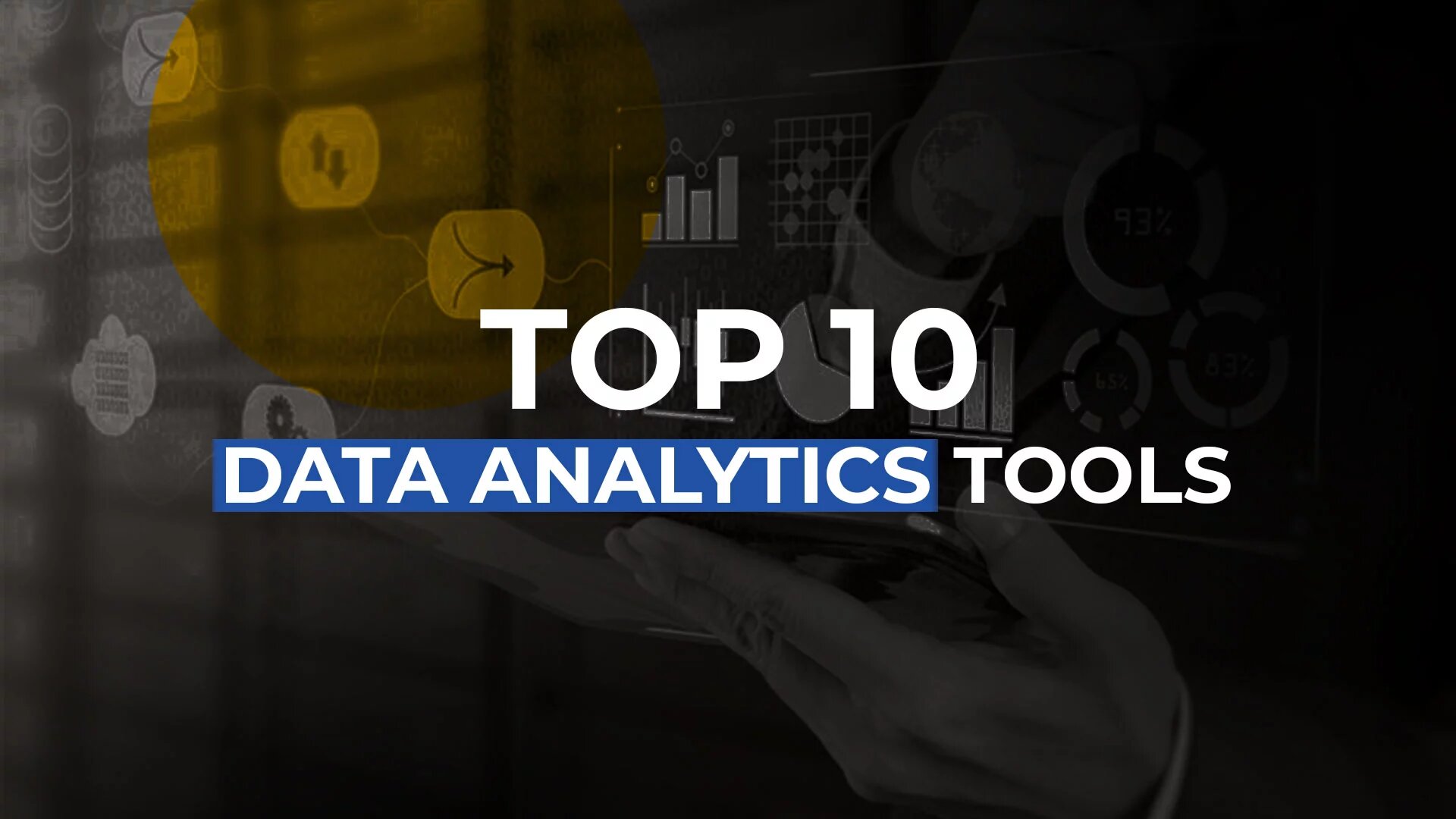Introduction
Tableau is a powerful data visualization and business intelligence tool that allows users to transform complex data into interactive visualizations, dashboards, and reports. Whether you are a data analyst, business professional, or decision-maker, Tableau can help you gain valuable insights from your data and make informed decisions. In this article, we will guide you through the process of downloading Tableau, ensuring that you have the necessary system requirements and taking you step-by-step through the installation process.
With Tableau, you can connect to various data sources, including spreadsheets, databases, and cloud services, and easily create interactive visualizations by simply dragging and dropping data elements onto a canvas. Tableau’s intuitive interface and extensive range of visualization options make it an ideal tool for data exploration, analysis, and presentation.
Before downloading Tableau, it is essential to ensure that your system meets the minimum requirements. Tableau is available for both Windows and Mac operating systems. For Windows, you will need at least Windows 7 or later, while for Mac, OS X Mavericks 10.9 or later is required. It is also recommended to have a minimum of 8GB RAM and 15GB free disk space for optimal performance.
In the upcoming steps, we will walk you through the process of downloading Tableau and installing it on your computer. Whether you are a first-time user or upgrading to the latest version, this guide will help you navigate the process smoothly.
System Requirements
Before downloading and installing Tableau, it is important to ensure that your system meets the minimum requirements for a smooth and optimal performance. Here are the system requirements for both Windows and Mac operating systems:
Windows:
- Operating System: Windows 7 or later
- Processor: Intel Core i3 or equivalent
- Memory (RAM): At least 8GB
- Free Disk Space: Minimum 15GB
Mac:
- Operating System: OS X Mavericks 10.9 or later
- Processor: Intel Core i5 or equivalent
- Memory (RAM): At least 8GB
- Free Disk Space: Minimum 15GB
It is worth noting that these are the minimum requirements. To ensure optimal performance, it is recommended to have higher specifications, especially if you deal with large datasets or perform complex calculations.
Additionally, Tableau requires a 64-bit operating system. It is also necessary to have administrative privileges on your computer to install the software successfully.
Tableau also provides mobile applications for iOS and Android devices. To use the mobile application, you need iOS 11 or later for Apple devices and Android 5.0 or later for Android devices.
By ensuring that your system meets these requirements, you can guarantee a seamless installation and enjoy the full capabilities of Tableau without any performance issues.
Step 1: Visit the Tableau Website
To begin the process of downloading Tableau, the first step is to visit the official Tableau website. Open your preferred web browser and enter “www.tableau.com” in the address bar. Press Enter to go to the Tableau homepage.
Once on the Tableau website, you will find a wealth of information about the different products and solutions offered. Take a moment to explore the site and familiarize yourself with the various features and options available. If you have any specific questions or need assistance, you can also access the Tableau support section or contact their customer service.
The Tableau website provides a clear and organized layout, making it easy to navigate and find the necessary resources. From the homepage, you can access the different products, including Tableau Desktop, Tableau Server, Tableau Prep, and Tableau Online.
Tableau offers a range of products suitable for different needs and preferences. Tableau Desktop is the most popular product and is ideal for individuals or small teams who want to create, publish, and share visualizations and dashboards. Tableau Server, on the other hand, is designed for larger organizations, enabling users to collaborate and share content securely. Tableau Prep helps with data preparation and cleansing, while Tableau Online provides cloud-based analytics with the convenience of accessing data from anywhere.
Take your time to review the product descriptions, features, and pricing to determine which Tableau product best suits your requirements. Once you have selected the product, you can move on to the next step of the downloading process.
Step 2: Select the Desired Product
After visiting the Tableau website, the next step in downloading Tableau is to select the product that best meets your needs. Tableau offers a range of products with different features and capabilities, catering to various user requirements. Here’s a quick overview of the key Tableau products to help you make an informed decision:
1. Tableau Desktop: This is the flagship product of Tableau and is best suited for individuals or small teams. With Tableau Desktop, you can connect to various data sources, create interactive visualizations, and build insightful dashboards. It offers a drag-and-drop interface, making data analysis and visualization intuitive and user-friendly.
2. Tableau Server: Ideal for larger organizations, Tableau Server allows you to share and collaborate on visualizations securely. With Tableau Server, you can publish dashboards and reports, schedule data refreshes, and provide controlled access to users within your organization. This product is suitable for teams who need to work on collaborative projects and provide access to a larger audience.
3. Tableau Prep: Tableau Prep is a data preparation tool that helps you clean, shape, and transform your data before analysis. It provides visual interfaces and smart suggestions to simplify the data cleansing process, saving time and effort when working with messy or complex datasets.
4. Tableau Online: Tableau Online is a cloud-based solution that allows you to publish, share, and collaborate on Tableau dashboards and visualizations. With Tableau Online, you can access your data from anywhere, making it convenient for remote teams or individuals who need to work on-the-go.
Once you have determined which product is the most suitable for your requirements, click on the respective product to proceed with the download. Each product page will provide detailed information about its features, benefits, and pricing options. Take your time to review the information and ensure that you are selecting the right product before moving on to the next step.
Once you have selected the desired Tableau product, you are ready to proceed to the next step: choosing the appropriate version that aligns with your operating system and requirements.
Step 3: Choose the Appropriate Version
After selecting the Tableau product that suits your needs, the next step in the downloading process is to choose the appropriate version. Tableau offers different versions to cater to various operating systems and requirements.
On the product page, you will find information about the latest version available. It is recommended to download the latest version as it incorporates the most recent features, bug fixes, and security enhancements. However, if you have specific requirements or prefer to use an older version, Tableau provides access to previous versions as well.
Before downloading the Tableau software, it is important to ensure that you choose the version that is compatible with your operating system. Tableau supports both Windows and Mac operating systems, and each version is specifically designed for the respective platform.
Once you have identified the correct version for your operating system, you can proceed to the download page. On the download page, you will find the download link for the selected version. Click on the download link to initiate the downloading process.
Tableau provides a free trial version for most of its products, allowing you to explore the software and its features before making a purchase. The trial version usually has a limited timeframe, during which you can evaluate the product and decide whether it meets your requirements.
If you are purchasing a licensed version of Tableau, you will need to provide your license key during the installation process. Ensure that you have the necessary license information ready before starting the installation.
Choosing the appropriate version is crucial to ensure compatibility with your operating system and access to the latest features. Take your time to verify the version requirements and proceed to the next step once you have confirmed the correct version for your needs.
Step 4: Provide Your Information
After selecting the appropriate version of Tableau, the next step in the installation process is to provide your information. Tableau requires you to provide certain details before proceeding with the download. This information helps Tableau keep you updated with product announcements, security updates, and other important notifications.
On the download page, you will typically find a form or prompt that asks for your information. The required information may include your name, email address, company or organization name, and country of residence. Additionally, you may be asked to provide information about your role and the purpose for using Tableau. This information helps Tableau tailor their communications and support to your specific needs.
Ensure that you provide accurate and valid information to avoid any issues with your Tableau experience. Your email address will be used to send you the download link, license information (if applicable), and any other related information. It is important to provide an email address that you regularly use and have access to for smooth communication.
Tableau takes privacy and data security seriously. They have strict privacy policies in place to protect your personal information. Your information will not be shared with third parties unless necessary for specific support or licensing purposes.
Once you have filled in the required information, double-check for any errors or typos. It is crucial to ensure the accuracy of your details to prevent any delays or issues during the installation process.
After providing your information, you may be prompted to confirm your subscription to Tableau newsletters or other marketing communications. This step is optional, and you can choose whether you want to receive such communications from Tableau.
Once you have successfully provided your information, you can proceed to the next step: downloading Tableau.
Step 5: Download Tableau
After providing your information, you are ready to download Tableau. The download process may vary slightly depending on the product and version you have selected. Here are the general steps to download Tableau:
1. Click on the download button or link provided on the Tableau website. This will start the download process and save the installation file to your computer.
2. The file you download will typically be in the form of an executable (.exe) file for Windows or a disk image (.dmg) file for Mac. Locate the downloaded file in your downloads folder or the location you specified during the download.
3. Double-click the Tableau installation file to launch the installation wizard. The wizard will guide you through the installation process and prompt you to accept the license agreement and select the installation options.
4. Follow the on-screen instructions to complete the installation. Depending on your operating system and security settings, you may need to provide administrative privileges or confirm certain security prompts during the installation process.
5. Once the installation is complete, Tableau will be installed on your computer, and you can launch the software by clicking on the Tableau icon in your applications folder or by accessing it from the Start Menu (Windows).
It is important to note that the download and installation process may take some time, depending on your internet speed and system specifications. Be patient during the download and ensure that you have a stable internet connection throughout the process.
If you encounter any issues during the download or installation, Tableau provides comprehensive support resources, including documentation, forums, and a dedicated customer support team. You can visit the Tableau support website or contact their support team for assistance.
With Tableau successfully downloaded and installed on your computer, you are ready to start exploring its features and unleash the power of data visualization and analysis.
Step 6: Install Tableau
Once you have downloaded the Tableau installation file, the next step is to install Tableau on your computer. Follow these steps to complete the installation process:
1. Locate the Tableau installation file that you downloaded in the previous step. The file may be an executable (.exe) file on Windows or a disk image (.dmg) file on Mac.
2. Double-click on the installation file to launch the Tableau Installer. If prompted, confirm that you want to run the installer.
3. The installation wizard will guide you through the setup process. Click “Next” to begin.
4. Read and accept the Tableau Software License Agreement. You must agree to the terms and conditions before proceeding with the installation.
5. Choose the destination location for installing Tableau. By default, Tableau will be installed in the recommended location. If you prefer a different location, click “Change” and select a new directory.
6. Select the installation type. You can choose to install Tableau for all users of the computer or just for the current user. It is recommended to select the option that suits your needs and privileges.
7. Customize the installation options if desired. You can choose to install additional data connectors, language packs, or sample workbooks. Select the options you want to include and click “Next”.
8. Review the summary of installation settings and click “Install” to begin the installation process. The installer will copy the necessary files and components to your computer.
9. Wait for the installation to complete. The progress bar will show the status of the installation process. This may take a few minutes, so be patient.
10. Once the installation is finished, click “Finish” to exit the installer. Tableau is now installed on your computer and ready to be used.
After the installation, you can find Tableau in your applications folder (Mac) or search for it in the Start Menu (Windows). Double-click on the Tableau icon to launch the software.
If you encounter any issues during the installation process, refer to the Tableau documentation or contact their support team for assistance. They will be happy to help you with any installation-related queries or problems.
Congratulations! You have successfully installed Tableau on your computer and are now ready to unleash the power of data visualization and analysis.
Conclusion
In this article, we have guided you through the process of downloading and installing Tableau, a powerful data visualization and business intelligence tool. From visiting the Tableau website to selecting the appropriate product, providing your information, and finally downloading and installing Tableau, each step has been covered to help you get started with Tableau quickly and efficiently.
Tableau offers a range of products tailored to different needs, including Tableau Desktop, Tableau Server, Tableau Prep, and Tableau Online. By choosing the right product and version for your operating system, you can leverage the full potential of Tableau’s features and capabilities.
We also discussed the importance of meeting the system requirements to ensure optimal performance. It is recommended to have sufficient RAM and free disk space to handle large datasets and complex calculations.
Providing your information during the download process ensures that you stay updated with product announcements and important notifications from Tableau. Rest assured that Tableau values your privacy and has stringent measures in place to protect your personal information.
Once you have completed the installation process, you can start exploring Tableau’s user-friendly interface, data connectivity options, and vast range of visualization tools. Whether you are an analyst, business professional, or decision-maker, Tableau empowers you to gain valuable insights and make data-driven decisions.
If you encounter any difficulties during the downloading or installation process, Tableau provides extensive support resources, including forums, documentation, and a dedicated customer support team to assist you.
Now that you have Tableau installed on your computer, take the time to explore its features, experiment with your data, and unleash the power of data visualization to unlock valuable insights. With Tableau, you can revolutionize the way you analyze and present data, making it an invaluable tool for individuals and organizations alike.

























